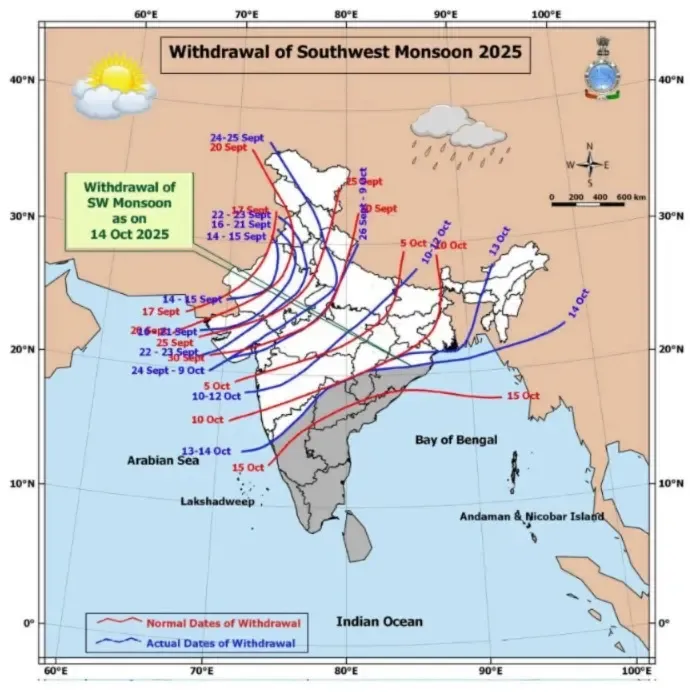Has the Southwest Monsoon Withdrawn from Northeast India?

Synopsis
Key Takeaways
- Complete withdrawal of the Southwest monsoon from Northeast India.
- The monsoon entered the region on May 26 and has been largely normal this year.
- Dry northwesterly winds are now affecting the region.
- Favorable conditions for monsoon withdrawal are present across eastern India.
- Expect a transition to cooler temperatures and lower humidity levels.
Guwahati/Agartala, Oct 14 (NationPress) The Southwest monsoon has officially retreated from the entire Northeast region, which encompasses eight states, as of Tuesday, according to officials from the India Meteorological Department (IMD).
A senior official from the IMD confirmed that the Southwest monsoon has completely withdrawn from the Northeast, covering Arunachal Pradesh, Assam, Manipur, Meghalaya, Mizoram, Nagaland, Sikkim, and Tripura—a trend similar to last year (2024) on this very date (October 14).
He explained that the four-month-long monsoon season, spanning from June to September, commenced in this region on May 26, just two days following its onset in Kerala on May 24.
“This year, like previous years, the Southwest monsoon has exhibited normal patterns in the Northeastern region,” the official remarked, noting that nationwide, a monsoon is deemed normal if rainfall is within plus or minus 10 percent of the long-term average.
He added that the withdrawal of the Southwest monsoon is also noted in most parts of eastern India, including West Bengal.
According to the IMD official, favorable conditions are emerging for the complete withdrawal of the Southwest monsoon from the remaining areas of the country in the coming days.
The forecast indicates that the skies will be predominantly clear, and humidity levels are expected to decrease.
This year, states like Assam, Manipur, Arunachal Pradesh, and Nagaland have experienced unprecedented rainfall.
With the monsoon's exit, dry northwesterly winds have begun to flow across both West Bengal and the Northeastern region, marking a seasonal transition, the official elaborated.
Earlier, the national weather bulletin had suggested that conditions were favorable for the monsoon’s withdrawal from the remaining parts of Maharashtra, Madhya Pradesh, Uttar Pradesh, Bihar, Jharkhand, Chhattisgarh, West Bengal, Sikkim, Odisha, Telangana, and the Northeast within the next few days.
With its final exit from the Northeast on Tuesday, this mountainous area is now poised for a dry and cooler phase in the upcoming weeks, heralding the onset of the winter season.









